When it comes to maintaining peak performance well beyond the typical career span, few footballers can rival Dries Mertens. Often overlooked in discussions about Belgium’s golden generation, where the spotlight typically falls on players like Romelu Lukaku and Kevin De Bruyne, Mertens has quietly defied expectations, proving that age is just a number.

Ciruzz and Beyond: Dries Mertens’ Remarkable Football Journey From Childhood
This article delves deep into the life of this extraordinary athlete, fondly known as “Ciruzz.” From his humble beginnings to his rise in the world of football, we’ll explore every aspect of his journey. Dries Mertens’ story is not just about his achievements on the field but also about his perseverance, adaptability, and the relentless drive that keeps him performing at the highest level, long after many have reached their peak.
Get ready to discover the full story of a football genius whose contributions often go uncelebrated. Without further ado, let’s dive into the fascinating life and career of Dries Mertens, from his early years to his momentous rise to fame.
Dries Mertens Childhood Story – Early and Family Background:
For Biography starters, Dries Mertens was born on the 6th day of May 1987 to his mother, Marijke Mertens and father, Herman Mertens in Leuven, Belgium’s Flemish region.
Dries Mertens is from a humble family background from football-loving parents who had an enormous vision for their only kid.
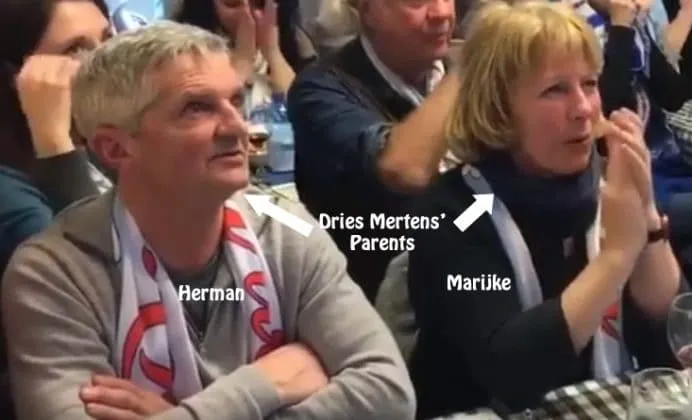
Meet Dries Mertens’ Parents – Marijke Mertens (His Mum) and Herman Mertens (his Dad).
Dries Mertens was raised with deep respect for his parents, Marijke and Herman, who instilled in him strong moral and ethical values, teaching him to cherish the simple things in life. At school, he was a quiet and humble student who excelled academically.
During sports periods, Dries was able to fully indulge his passion for soccer, often using every free moment to play the game he loved. His natural talent stood out, as he demonstrated exceptional ball-handling skills compared to his peers. Recognizing his potential, his school coach spoke with his parents, encouraging them to support Dries in pursuing a career in professional football.
Career Buildup:
During the mid-1990s, Belgium witnessed a new wave of football enthusiasm.
The country, with a population of only 11 million, had a watershed moment in 1998 after their national team disgracefully crashed out of the 1998 World Cup group tournament.
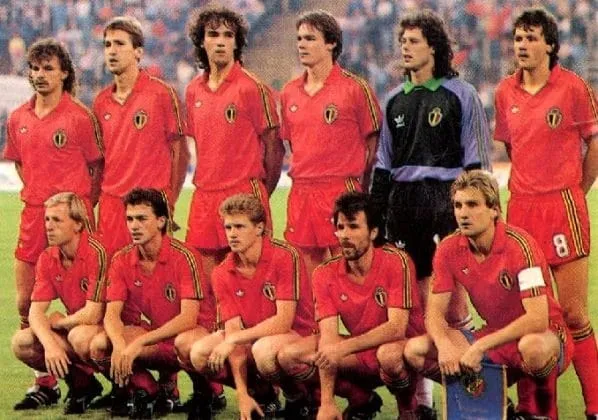
In the mid-1990s, Belgium’s football spirit was shaken by their national team’s early exit from the 1998 World Cup.
Bob Browaeys, a coach for Belgium’s youth teams at all levels, was assigned to draft a blueprint, known as Sablon’s document, to address the “lack of unified vision on youth football” that existed at the time. This initiative brought together over 30 coaches from the Belgian federation to discuss a transformative approach to the sport in the country.
Their discussions revealed that there was too much focus on winning rather than developing young players. This realization sparked a youth football revolution in Belgium, and Dries Mertens emerged as one of its key beneficiaries.
The Switch:
As visionary as his parents were, they had already made their son enrolled on the roster of the local team, Stade Leuven, two years (1996) before the France 1998 World Cup, which sparked the Belgian football revolution.
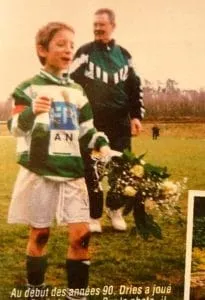
The early career years of Dries Mertens.
As the football revolution started in Belgium, funds for youth football development became available. It favoured bigger clubs like Anderlecht, whose scouts were empowered to get talented kids from local clubs.
Scouts from Anderlecht first noticed Dries Mertens while he was playing for his local club. Impressed by his talent, they extended an invitation for him to join the club’s youth academy in 1998, marking the beginning of his journey in professional football.
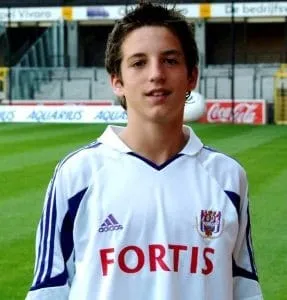
Anderlecht scouts discovered Mertens in 1998, leading to an invitation to join the club’s youth academy.
Diers Mertens’ parents, despite not being rich, gave their best support for their son. As Dries had rightly said,
“My father would drive me in his bus to Anderlecht every day for training in Brussels, starting when I was just 11 years old and continuing until I turned 18,” Dries recalls.
After his switch to Anderlecht, it didn’t take time before his old club got dissolved by the Belgium football Authorities, who targeted mushroom clubs at that time.
The Disappointment:

Dries Mertens spent five years in Anderlecht’s youth academy before facing a significant setback. In 2003, he was released after coaches deemed him too short and physically unable to compete at a professional level.
After leaving Anderlecht, Mertens was signed by Gent, another Belgian Pro League team, where he continued to rise through the youth ranks. However, he encountered challenges again. The coaching staff at Gent, similar to those at Anderlecht, remained skeptical of his potential due to his slight build. Rather than releasing him, they opted to loan him out, and he spent time at AGOVV Apeldoorn in the Netherlands.
Dries Mertens Bio – Rise to Fame:

Mertens’ path to professional football really only began after crossing the border into the Netherlands. AGOVV Apeldoorn became the launchpad for Mertens’s career.
There, he excelled, became captain, and won the 2009 Gouden Stier, awarded to the best player in the Dutch second division.
Because of his troubles of rejection, Mertens became a late bloomer to fame. He only started playing football at the highest level at 22, making his Eredivisie debut for Utrecht in 2009.
His performance led the modest club, Utrecht, into qualifying for Europe for the first time in four years, thus leading to his Dutch league Footballer of the Year nomination.
At that time, the rise of the Belgian became the most talked-about storyline in the country. This feat landed him at PSV in 2011. After impressing again with 37 goals in 62 appearances, Napoli came calling.
Mertens became Rafael Benítez’s first signing as the new Napoli manager. While in Napoli, handsome Mertens (pictured below) used his low centre of gravity to buzz around in wide areas, which led to him bamboozling top defenders.

The rest, as they say, is history. Dries Mertens, the talented footballer, has had a lasting influence on the game, and now we see his playing style reflected in Giuliano Simeone, the famous son of Diego Simeone.
Dries Mertens Love Life with Kat Kerkhofs:
Starting off, Dries Mertens is indeed handsome and taken (Sorry Ladies!!). His heart belongs to his one and only childhood sweetheart, Kat Kerkhofs. Both lovers dated for ten years before deciding to tie the knot.

In June 2015, Mertens married his childhood love and partner, Kat, in Naples.

The wedding between Kat Kerkhofs and Dries Mertens.
Kat is a dancer and researcher who comes from a wealthy home. Her father, Mr Kerkhofs, was a popular musician and drummer in the seventies. He died of a heart attack on Christmas Eve of 2004.
The Weird Couple:
Kat Kerkhofs once spoke to the Belgian television channel Vier, where she confessed that she and her husband (Dries Mertens) enjoy getting intimate in public, especially at train toilets.

Kat Kerkhofs and her husband, Dries Mertens, have a penchant for public displays of affection, even on train toilets.
In the interview with Gert Late Night, Kat Kerkhofs said,
“In public, I behave like a lady, but in bed I am eccentric. I think that when you are sure of yourself on the intimate level, things would get better on a general level. I like to do it in places a little unusual, like the basin of a train. I like it a lot.”
The Halloween Life:
Napoli once organized a couple-friendly Halloween. Dries Mertens and his wife Kat were forced to get creative by appearing as two teammates in the Napoli team.
Mertens revealed that he and his good lady spent their Halloween dressed as two of his Napoli teammates, namely Lorenzo Insigne and Marek Hamsik.

At a Napoli Halloween event, Dries Mertens and wife Kat creatively dressed as teammates Lorenzo Insigne and Marek Hamsik.
As seen in the photo above, they made sure they had in place their authentic tattoo sleeves, hipster spectacles and faux mohawks.
Baby named after Him:
Once upon a time, Dries Mertens and the rest of his Belgian teammates were used as a criterion to name a newborn Belgian baby.
The parents of the un-named child insisted that their child would be given the names of Belgian match-winners against Algeria.
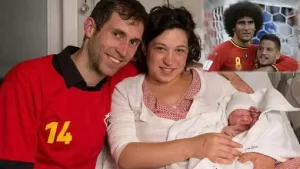
The parents told Het Laatste Nieuws:
“We agreed that, if they win that game, we would give our son Titus, all the names of the goal scorers. If the team scores five times, then we would be given five names.”
Eventually, the parents of Evelien Jonckheere and Peter Tijtgat named their newborn boy Titus Marouane Dries Tijtgat. This implies that Dries Mertens and Marouane Fellaini were the match winners.
No China Monies:
Did you know that Dries Mertens once turned down a lucrative offer to play in China? He did so because he felt his parents would be disappointed if he prioritized money over his passion for football.
This decision highlights the values instilled in him by his family. Dries often reflects on how his parents’ ethics shaped his approach to life and football, guiding him to resist the temptation of chasing after wealth at the expense of his true passion.
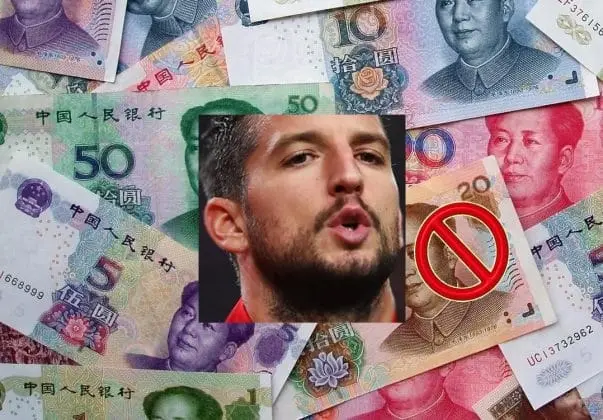
Dries Mertens Personality – Explained.
In Dries Mertens’ own words, “I have so much respect for what my parents did for me as a child. They didn’t raise me to focus on money—I would have disappointed them if I had gone to China.”
Although he didn’t reveal the specific figure he was offered, Mertens admitted that it was a challenging decision to turn down such a substantial sum. He explained,
“We weighed the pros and cons; my wife even read testimonials from people living there. Despite that, I chose to say no. I can tell you, it’s difficult to refuse such an amount. If I had accepted the offer, my children and even my grandchildren wouldn’t have to worry about their future.”
While Mertens acknowledges that a good salary is important, he emphasizes that his upbringing taught him to appreciate the smaller things in life. A move to China solely for financial gain was never his intention.
Fact Check:
Yes, everyone knows Dries Mertens is a dead-ball specialist and a Napoli legend. A Belgian football Legend like Eden Hazard and Thibaut Courtois. Also, he, alongside Kalidou Koulibaly, is among many Napoli Legends. We use this moment to thank you for reading our Dries Mertens Biography facts. We strive for accuracy and fairness to deliver Belgian Soccer Stories. Kindly stay tuned for more! The Life History of Charles De Ketelaere and Andre Onana will excite you. If you notice anything in this article that seems off or incorrect, please feel free to leave a comment or reach out to us! Your feedback is appreciated.


